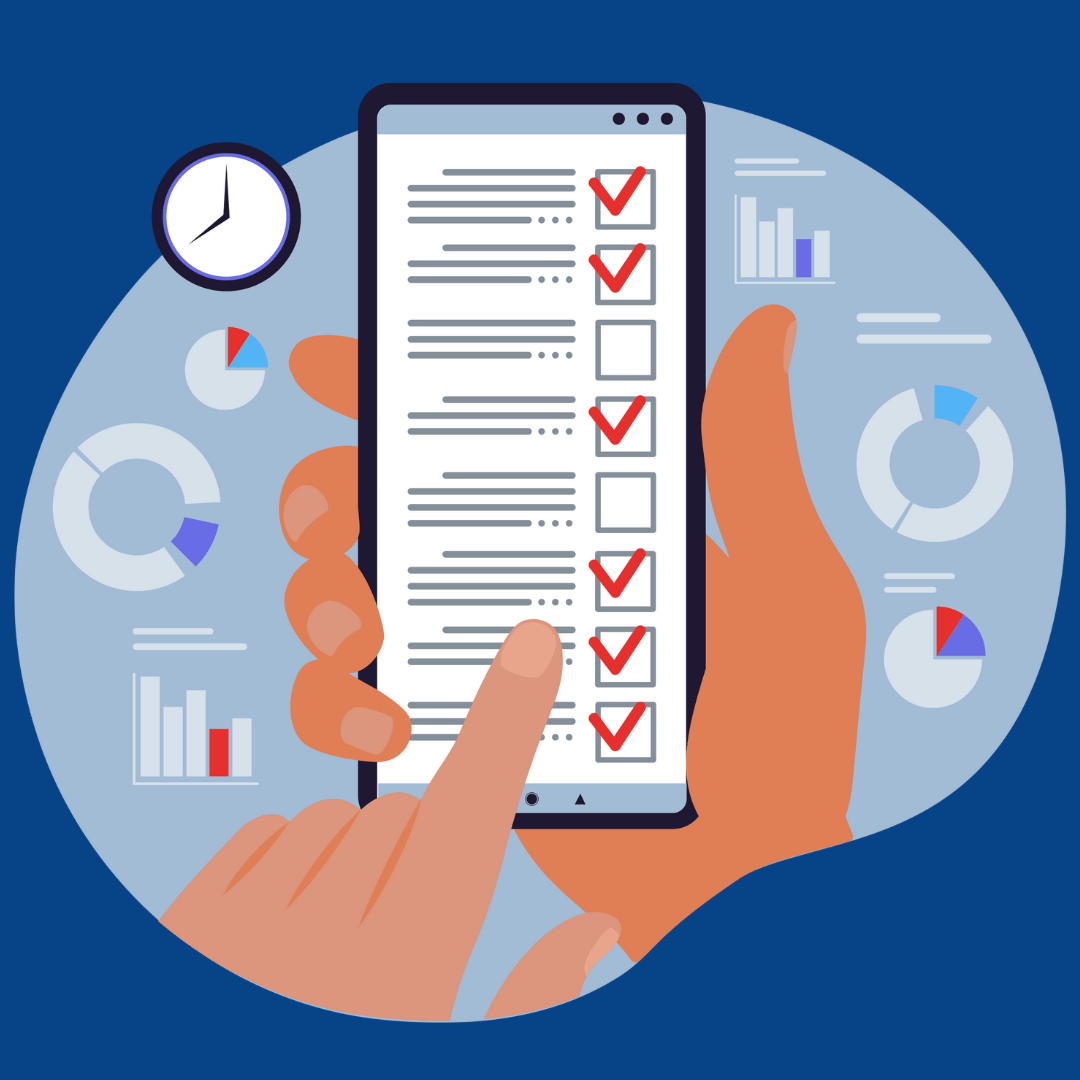
As smartphones become ubiquitous, more consumers are relying on mobile devices for shopping, browsing, and social interaction. This shift has transformed the way brands connect with their audiences, making mobile-first research essential for capturing accurate, timely insights. Mobile-first research methods are designed specifically to engage participants on their smartphones, tapping into the seamless accessibility, real-time engagement, and broad reach that mobile devices offer.
In this article, we’ll explore the benefits of mobile-first research, the methods that best align with mobile users, and why adapting to this approach is crucial in understanding today’s fast-evolving consumer behavior.
Why Mobile-First Research Matters
Traditional research methods, such as desktop surveys or in-person focus groups, often fail to reach audiences where they spend the most time—on mobile devices. Mobile-first research meets consumers in the spaces they frequent, making it easier for brands to gather accurate and relevant data. Here’s why mobile-first research matters today:
- Increased Reach and Participation
Smartphones are now a primary device for online access. By prioritizing mobile, researchers can reach a larger audience across different demographics and capture data from consumers on the go, enhancing the inclusivity of the study. - Real-Time Feedback
Mobile-first research allows for instant responses, helping brands understand consumer sentiment in real-time. This is invaluable for studies on topics like brand perception, product testing, and ad effectiveness. - Better Data Accuracy
By meeting participants where they are comfortable—on their mobile devices—brands can collect more genuine responses. Mobile-first designs reduce barriers to participation, improving both response rates and data accuracy. - Flexible Data Collection
Mobile-first methods allow for a variety of formats—surveys, chat-based questionnaires, in-app polls—that can be adapted to fit different research goals. This flexibility is ideal for today’s fast-paced consumer environment, where participants may only have a few minutes to engage with a study.
Key Mobile-First Research Methods
Adopting mobile-first research doesn’t just mean resizing surveys for smaller screens; it’s about using methods that truly leverage the power of mobile to gather insights effectively. Here are some of the most impactful mobile-first research methods:
1. Mobile Surveys
Mobile surveys are the cornerstone of mobile-first research. Designed with brevity in mind, they allow participants to answer questions quickly and conveniently. Best practices for mobile surveys include:
- Short, Concise Questions: Keep questions brief and avoid complex language to reduce drop-off rates.
- Visual Scales: Use visuals, like sliders or emojis, for responses to make surveys more engaging and intuitive.
- Optimized Layouts: Ensure the survey design is responsive and mobile-friendly, avoiding heavy text blocks and tiny buttons.
2. In-App Polls and Feedback
In-app polls allow brands to collect feedback directly within their apps, capturing insights in real-time without disrupting the user experience. These short, simple questions help gather insights on user experience, satisfaction, or product preferences at the moment they are relevant.
3. Location-Based Research
With consumers often using mobile devices on the go, location-based research helps brands gather insights tied to specific locations. For instance, retailers can target customers with surveys right after they exit a store or receive feedback based on users’ current locations to understand how different settings influence their behavior.
4. Mobile Diary Studies
Mobile diaries are an effective way to track ongoing behaviors over time. Participants can log their thoughts, experiences, and usage patterns directly from their mobile devices. This method is particularly useful for product testing, tracking lifestyle habits, and understanding consumer routines.
5. Mobile Ethnography
Mobile ethnography allows participants to capture their experiences through photos, videos, and notes taken on their phones. This qualitative approach helps researchers gain a firsthand look at consumers’ environments and behaviors, offering deeper insights than traditional survey responses alone.
6. SMS and Chat-Based Questionnaires
SMS and chat-based surveys replicate the conversational nature of mobile devices, making research more engaging and user-friendly. Participants are more likely to respond when they can engage in a format that feels familiar and conversational, allowing brands to capture insights through a series of text-based questions.
Benefits of Mobile-First Research Methods
1. Improved Engagement and Response Rates
Mobile-first research methods are designed for convenience, helping to boost engagement and reduce dropout rates. Shorter, more interactive surveys make participation easier, especially for younger demographics like Millennials and Gen Z, who spend much of their time on mobile devices.
2. Enhanced Consumer Insights with Real-Time Data
Mobile-first research captures feedback in real-time, allowing brands to see immediate responses to their products, services, and advertising efforts. This immediate insight is invaluable for agile marketing strategies and helps brands make quick adjustments to their campaigns or products.
3. Increased Inclusivity Across Demographics
Mobile-first research allows brands to reach a wider and more diverse demographic. As mobile phones are widely used across age groups, locations, and socioeconomic backgrounds, mobile-first methods can improve inclusivity in research, providing a more representative view of consumer behavior.
4. Cost-Effective and Scalable
Conducting research through mobile devices reduces the need for physical infrastructure, making studies more cost-effective. Additionally, mobile research methods are easily scalable, allowing brands to conduct large-scale studies at a fraction of the cost of traditional methods.
Best Practices for Implementing Mobile-First Research
To ensure mobile-first research is effective, researchers must consider the design and user experience of each study. Here are some best practices:
1. Prioritize a Mobile-Optimized Design
Every element of a mobile survey—from questions to visuals—should be optimized for small screens. Avoid heavy visuals and ensure buttons are large enough for easy tapping. A seamless experience helps reduce participant frustration and increase engagement.
2. Keep It Short and Simple
Mobile users have limited time and attention spans. Keep surveys brief and limit each question to the essentials. Use engaging visuals, interactive elements, and simple language to make the experience user-friendly.
3. Leverage Mobile-Specific Features
Mobile devices offer unique features that enhance research, such as GPS for location-based insights or cameras for photo and video capture. By integrating these features, brands can capture richer, more contextual data.
4. Test for Usability Across Devices
Before launching a mobile-first survey, test it across various devices and screen sizes to ensure a consistent experience. This helps prevent issues that could deter participants, such as slow load times or incompatible design elements.
5. Respect Privacy and Data Security
Mobile research often involves sensitive data, including location tracking and personal details. Adhere to data privacy regulations, such as GDPR or CCPA or DPDPA, and inform participants about data usage. Transparency in data practices builds trust and encourages participation.
Challenges of Mobile-First Research and How to Overcome Them
While mobile-first research offers many advantages, it also comes with challenges:
- Maintaining Data Quality:
Mobile surveys may yield shorter responses or lack the depth of in-person research. To overcome this, researchers can combine mobile surveys with other qualitative methods or incorporate open-ended questions that encourage detailed responses. - Device and Connectivity Limitations:
Participants may face technical issues due to device compatibility or network limitations. Pre-testing surveys across various devices and providing offline options can help mitigate these challenges. - Privacy Concerns:
Mobile data collection often involves sensitive information. Ensuring transparency about data usage and following data protection laws/guidelines can help address participant’s privacy concerns.
The Future of Mobile-First Research
As consumer behavior continues to evolve, mobile-first research will become a mainstay in market research. With the rise of mobile commerce, social media engagement, and app-based services, mobile-first research methods offer a direct line to consumers, providing insights that are timely, relevant, and reflective of real-world behavior. In the future, advancements in AI and machine learning will likely enhance mobile research, allowing for more personalized and efficient data collection processes.
Brands that prioritize mobile-first research today are well-positioned to keep pace with changing consumer behavior and gain a competitive advantage. By meeting consumers where they are, brands can gather insights that are not only accurate but also deeply connected to the lifestyles and preferences of their audiences.
1. What is mobile-first research?
Mobile-first research is a data collection approach that prioritizes mobile devices, ensuring that surveys, polls, and other research methods are optimized for smartphone users.
2. Why is mobile-first research important?
It allows brands to gather timely and accurate insights by meeting consumers on the devices they use most, capturing real-time data, and increasing engagement.
3. How does mobile-first research improve response rates?
By offering a convenient, user-friendly experience on mobile, participants are more likely to engage and complete surveys, leading to higher response rates.
4. What are some effective mobile-first research methods?
Effective methods include mobile surveys, in-app polls, location-based research, mobile diaries, and SMS-based questionnaires.
5. What challenges does mobile-first research face?
Challenges include maintaining data quality, device compatibility, and addressing privacy concerns, which can be mitigated through thorough testing and clear privacy policies.


